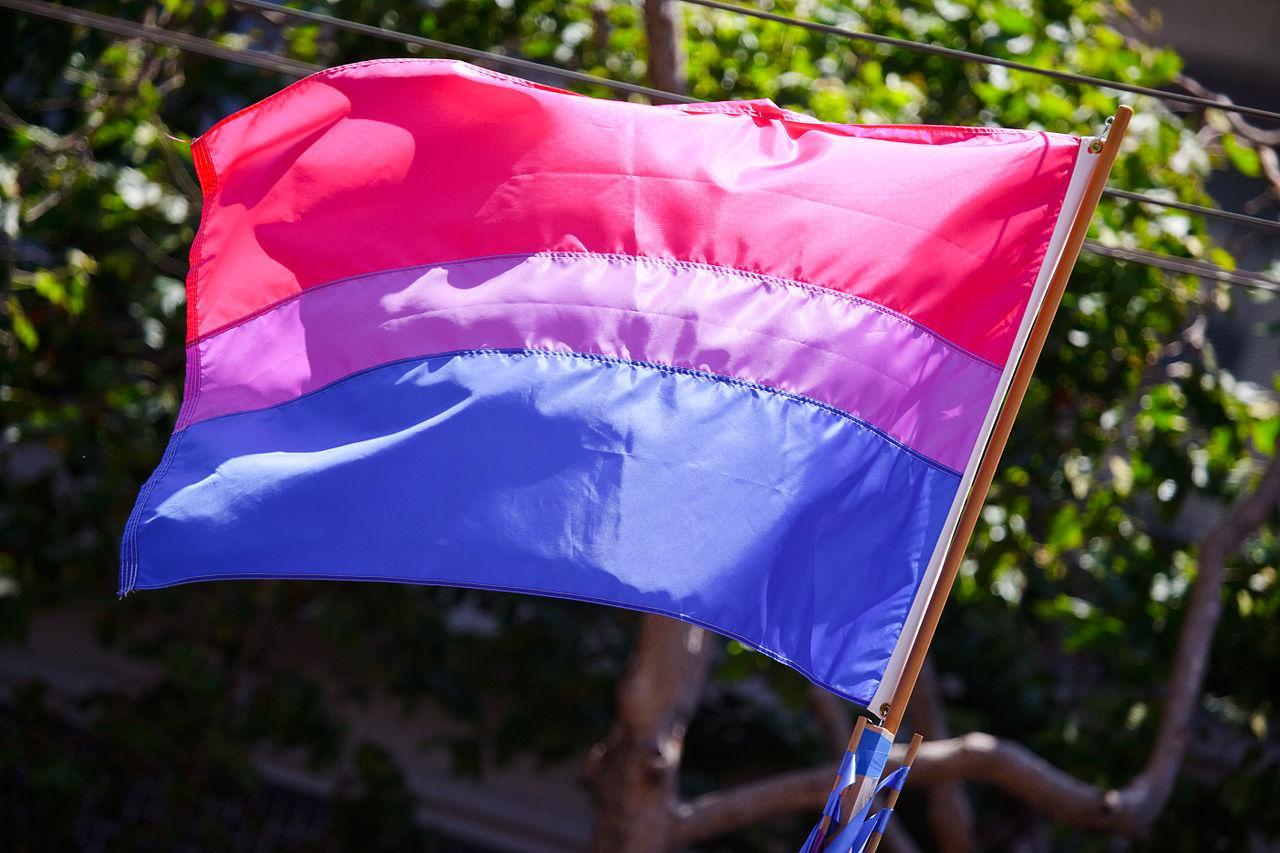Lesbians, gays and straights – here's what you can do to better support bisexual people
No, I don’t need to ‘pick a side’. And no, I’m not ‘confused’. Let me tell you why a conversation about the invisible B is long overdue


Your support helps us to tell the story
From reproductive rights to climate change to Big Tech, The Independent is on the ground when the story is developing. Whether it's investigating the financials of Elon Musk's pro-Trump PAC or producing our latest documentary, 'The A Word', which shines a light on the American women fighting for reproductive rights, we know how important it is to parse out the facts from the messaging.
At such a critical moment in US history, we need reporters on the ground. Your donation allows us to keep sending journalists to speak to both sides of the story.
The Independent is trusted by Americans across the entire political spectrum. And unlike many other quality news outlets, we choose not to lock Americans out of our reporting and analysis with paywalls. We believe quality journalism should be available to everyone, paid for by those who can afford it.
Your support makes all the difference.What word springs to mind when you see the acronym LGBT? Gay? In actual fact, only two of these unassuming letters – L and G – refer to something most of us understand to mean exclusively same-sex attraction. The letter “T” bears no relation to sexual orientation at all, referring instead to a person’s gender identity. This leaves us with “B”: the very much maligned and misunderstood bisexuals.
For too long, trans and bisexual folk have been either ignored or abused. I spent over two years working for an LGBT specific service and would frequently attend meetings where the large majority of attendees were cis (their current gender identity matched the gender they were assigned at birth), white, gay men. The implicit message seemed to be that these people possessed both the knowledge and desire to represent all colours in the LGBT rainbow. It was quite clear to me that these people could not and should not be doing so.
While the word “bi” refers to “two” or “twice”, many bisexual people identify and are attracted to a range of gender expressions and sexualities. We’re nothing if not inclusive.
Despite this, bisexual people continue to face prejudice and discrimination from the gay, lesbian and heterosexual communities. Abuse from the straight world is, sadly, nothing new, but discovering these attitudes among gay and lesbian people can be very painful.
In my experience, lesbian and gay people can often make you feel as if you’re “letting the side down” if you choose to date someone of the opposite sex. I’m aware of lesbian women who point blank refuse to date bisexual women, with this being explicitly stated on some dating profiles. We know that this kind of discrimination is already rife in relation to race and can safely assume that those who are trans, disabled or from another marginalised group have to contend with multiple levels of prejudice.
“Oh, I hate it when that happens” was the response I got from an acquaintance upon learning my ex-girlfriend was now dating a man. I’ve also witnessed “gold star” lesbians – those women who have never had sex with a man – being revered within lesbian circles. For those of us who have, the implication seems to be that we’ve failed or are somehow lesser for doing so.
This antagonism is far from exclusive to women. If you identify as a bisexual man, it’s often assumed that you’re too scared to “come out fully” and that any same-sex forays are an inevitable step on the journey to fully fledged gaydom. In last year’s Celebrity Big Brother, Christopher Biggins remarked: “The worst type, I’m afraid to say, are the bisexuals. What it is, is people not wanting to admit they’re gay.”
A conversation with a stranger at a work conference to whom I disclosed my bisexuality left her incredulous to discover that my lesbian girlfriend not only knew about my bisexuality, but was content to be with me. Prior to my disclosure, she’d stated that bisexual people should simply “pick a side” and accused bisexual people of “attention seeking”, an accusation that tends to be levelled at women who it’s incorrectly assumed are “performing” for heterosexual male attention.
Any woman who has had their love or affection for another woman reduced to the sniggers and leers of creepy men will know that it is exactly this kind of response which frequently prevents us from showing affection of the most vanilla kind, such as hand-holding. It’s certainly not something I court.
These attitudes are characteristic of some of the classic biphobic tropes that still endure, despite the progress that has been made for many gay and lesbian people. We continue to be portrayed as selfish, greedy, promiscuous, confused and untrustworthy. It should come as no surprise then that research suggests that bisexual people are at a more heightened risk of depression, anxiety and suicidality than lesbian, gay or heterosexual people. Despite this, I struggle to see any progress in terms of a reduction in biphobic attitudes or bi-invisibilty.
Bi-invisibility tends to occur when binary assumptions are made about a person’s sexual orientation or identity. Such assumptions are generally made based upon the perceived gender of a person’s partner. As a bisexual person in a relationship with a lesbian, for example, I am continually assumed to also be lesbian.
This also puts those of us in romantic or sexual relationships with people of the same sex at the same risk of homophobia as lesbians and gay men. As such, I face similar challenges, such as coming out (or not) to family, colleagues and friends and living with the fear of homophobic abuse or violence. Upon discovering you have a same-sex partner, heterosexual people sometimes naturally assume that you must invariably be attracted to them. This is not the case. For those bisexual people in opposite-sex relationships, their identity is frequently rendered non-existent.
In the past, I’ve often identified myself as “queer” or stated that I “have a girlfriend” when people have asked about my sexual orientation, due to the anxiety I’ve felt about people’s reactions. It’s 2018: do I really have to hide who I am?
While many of us can point to progress made by gay and lesbian people, including greater representation at all levels of society, that same representation for bisexual people is simply not reflected. What to do?
Some suggestions. Stop using the acronym LGBT when you’re really only referring to lesbian and gay people. Don’t use the word “gay” to refer to all LGBT people and issues. Think about the people around you. Do you know for sure that they’re gay or lesbian or have you simply made assumptions? The reaction from some people when asked for clarification on their sexuality can often reveal a lot about their own prejudices, so be prepared to challenge any biphobic myths you might encounter.
Celebrate bi-visibility day on 23 September. Don’t erase historical figures’ bisexual identities by referring to them as lesbian or gay. Ensure bisexual people are represented throughout your organisation and work to make them feel welcome. Seek bisexual-specific training.
Bisexual people face unique challenges. With the support of gay, lesbian and heterosexual allies, we can all work to make progress in terms of increased representation and visibility. We all deserve better – and we can do better.
Join our commenting forum
Join thought-provoking conversations, follow other Independent readers and see their replies
Comments